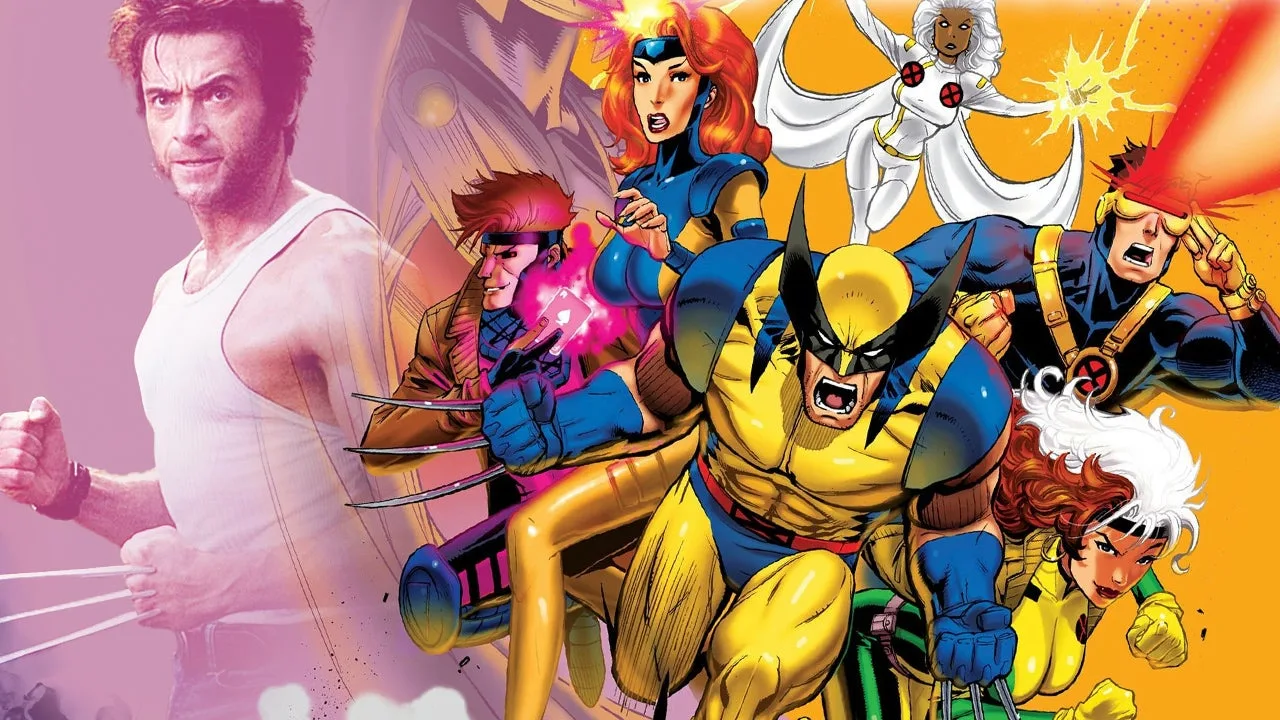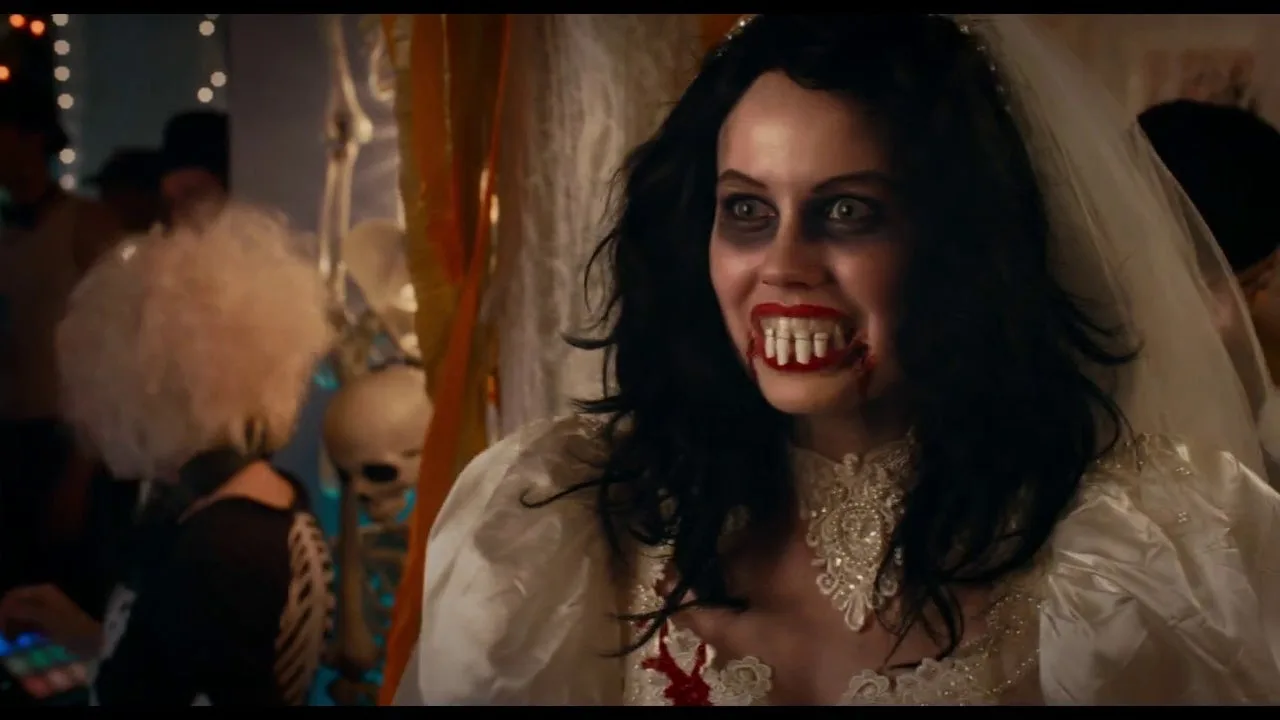X-Men ‘97 is a show steeped in Marvel nostalgia. It’s a direct continuation of X-Men: The Animated Series, a show that holds a special place in a lot of fans’ hearts. X-Men: The Animated Series introduced mutant heroes like Wolverine and Cyclops to a much bigger audience, winning legions of fans thanks to those colorful characters and a nonstop dose of mutant soap opera.
To celebrate the release of X-Men ‘97, let’s take a step back to explore why the original cartoon was so influential, and how it continues to influence the X-Men franchise even today. Cue up the theme song…
The X-Men Costumes
X-Men: The Animated Series hit at a time when the comics had just undergone a major overhaul. 1991’s X-Men #1 shattered sales records and brought a bold new visual style to the franchise, complete with new costumes for iconic X-Men like Cyclops, Jean Grey and Rogue. Gone were the dark, punk-flavored costumes of the ‘80s, replaced by bright primary colors, bomber jackets and lots and lots of pouches.
In a clear example of cross-media synergy, the animated series borrowed heavily from Marvel’s flagship X-Men comic for its character designs, which at the time was co-written and drawn by Jim Lee. Wolverine was decked out in his yellow and black tiger stripe costume. Cyclops wore his tactical blue and yellow ensemble. Even Professor X traded in his wheelchair for the more futuristic floating yellow hoverchair. The result was a much more contemporary look than the Pryde of the X-Men cartoon that had debuted just a couple of years earlier.
Even the core cast of X-Men: The Animated Series was inspired heavily by Lee’s X-Men. The show’s X-Men roster is very similar to the Blue Team lineup from the comics, which also featured Cyclops leading characters like Wolverine, Rogue, Gambit and Beast. The X-Men comics have never been more popular than they were in the early ‘90s, and the animated series made the wise choice in staying close to that formula. The show made a name for itself by combining classic X-Men storylines with a more contemporary aesthetic.
Like many comic book heroes, the X-Men rarely stick to one set of costumes for long. The look of these heroes is always changing as new artists come aboard and reinvent familiar costume designs. But those early ‘90s costumes wound up sticking around for a surprisingly long time. It wasn’t until the early 2000’s, when the first live-action movie came onto the scene, that Marvel delivered another fundamental visual overhaul of the franchise.
The animated series is what gave these X-Men costumes so much staying power, to the point that they became the default look for many characters. Even decades later, it’s telling that so many of the X-Men tend to revert to these early ‘90s costumes. Wolverine can never escape the tiger stripes. Cyclops will always be the musclebound dork in blue and gold. Gambit will always be decked out in pink armor and a trenchcoat. Superhero costumes simply don’t get more iconic than this.
The Wolverine/Cyclops/Jean Grey Love Triangle
X-Men may have been an ensemble series, but there’s no denying the fact that Cal Dodd’s Wolverine tended to steal the show in any episode in which he played a major role (which was most of them). Wolverine was the team’s resident bad boy and man of mystery, which made him a natural fan-favorite.
A huge part of Wolverine’s appeal on the show came from the romantic tension between him and Catherine Disher’s Jean Grey. Throughout the series, Logan pines after the beautiful, kind-hearted Jean, much to the chagrin of Norm Spencer’s Cyclops. Jean may love the stalwart, dependable Scott Summers, but she can’t help but be tempted by the rough-and-tumble loner that is Logan.
That romantic triangle between Wolverine, Jean Grey and Cyclops became one of the show’s most enduring plot points. Heck, it launched more than one Internet meme in the decades that followed.
Given how much the series draws from classic X-Men comics of the ‘70s, ‘80s and ‘90s, you might naturally assume this love triangle was also a hallmark of the older X-Men comics. But that’s not actually the case. While Wolverine was definitely the team’s designated bad boy from the day he joined the X-Men, those early Uncanny X-Men comics don’t focus nearly as much on the Wolverine/Cyclops/Jean Grey dynamic. Wolverine had his own lovers to woo, hence his short-lived engagement to Mariko Yashida. Wolverine’s intense infatuation with Jean became a much bigger focus in the animated series.
However, it’s a change that clearly struck a chord with X-fans, and it’s one that’s rippled out to influence the franchise in many other media. The live-action movies focus a great deal on the Wolverine/Jean Grey/Cyclops triangle, with Hugh Jackman’s Logan instantly becoming smitten with Famke Janssen’s Jean after their first encounter in 2000’s X-Men. That love triangle remains at the forefront of 2003’s X2: X-Men United and 2006’s X-Men: The Last Stand, making it perhaps the show’s most obvious point of influence.
Even the comics began focusing more on that love triangle in the wake of X-Men: The Animated Series. Grant Morrison’s New X-Men further complicated things by having Cyclops cheat on Jean with reformed villain Emma Frost, only for Jean herself to die in the series’ climax. Later, 2011’s X-Men: Schism saw Wolverine and Cyclops’ friendship completely fall apart, with the memory of Jean being the final wedge between them.
These days, Jean is alive again and all those old wounds have been healed. In fact, recent comics have hinted that Logan, Scott and Jean are in a polyamorous relationship together. It’s an unexpected plot twist, and one that could only have come about thanks to the influence of X-Men: The Animated Series.
The Dark Phoenix Saga and More Classic Adaptations
Perhaps the real secret of X-Men: The Animated Series’ success is that it combined the bright, dynamic look of Marvel’s contemporary X-Men comics with stories heavily inspired by the classic Uncanny X-Men run. Nearly every episode of the series draws on the comic book source material in some way, whether through specific character beats or by outright adapting familiar storylines.
For example, The X-Men’s first encounter with Magneto in Season 1 is based on 1963’s The X-Men #1. From there, the series went on to adapt numerous classic tales like Days of Future Past, Weapon X, The Phalanx Covenant and the Legacy Virus storyline that was such a big part of the early ‘90s comics.
But arguably the show’s greatest accomplishment came in Season 3, when it tackled adaptations of both The Phoenix Saga and The Dark Phoenix Saga. Both storylines leaned heavily into the original comics, introducing characters like Erik the Red, Gladiator, Empress Lilandra and the Hellfire Club (or the Inner Circle, as they were known in the show). The series captured the full cosmic scope of Jean Grey’s dramatic rise and fall as the Phoenix and the X-Men’s desperate fight to save the woman they love.
When it comes to adapting this seminal X-Men storyline, X-Men: The Animated Series remains the gold standard.
The Dark Phoenix Saga still looms large over the franchise even today. It’s a story that every X-Men adaptation attempts to tackle if it sticks around long enough. The 2009 animated series Wolverine and the X-Men is built directly around Jean’s corruption by the Phoenix. We’ve seen two different adaptations in live-action so far, first in 2006’s X-Men: The Last Stand and later in 2019’s Dark Phoenix. But neither film comes close to doing the original justice. When it comes to adapting this seminal X-Men storyline, X-Men: The Animated Series remains the gold standard. Only time will tell if the MCU can succeed where Fox’s X-Men universe has failed.
The Age of Apocalypse Crossover
Like Batman: The Animated Series, X-Men: The Animated Series is notable for introducing characters and plot elements that have gone on to appear in other media. Batman: The Animated Series gave the world Harley Quinn. As we’ve already covered, X-Men: The Animated Series popularized the Wolverine/Cyclops/Jean Grey love triangle. The series also gave us Morph, a character loosely based on the Marvel Comics creation Changeling, but for all intents and purposes a new creation who’s gone on to appear in comics like Exiles.
But did you know that X-Men: The Animated Series also inspired one of the most popular X-Men crossovers of the ‘90s? There would be no Age of Apocalypse without X-Men: The Animated Series lighting the way.
Age of Apocalypse has its roots in “One Man’s Worth,” a two-part story arc from Season 4 of the animated series. These two episodes introduce a hellish alternate timeline created when the villains Trevor Fitzroy and Bantam travel back in time and kill a young Charles Xavier. With no Professor X to form the X-Men, the world quickly devolves into all-out war between humans and mutants. Only with the help of Wolverine and Storm can Bishop set things right and restore the timeline.
“One Man’s Worth” remains one of the most beloved story arc from the animated series. It’s also notable for drawing direct comparisons between the anti-mutant hysteria of the present day to the racism faced by Blacks in the 1950’s.
These two episodes struck a chord within Marvel as well as without. Writer Eric Sewald told Polygon that the episodes caught the eye of Marvel Comics’ editor-in-chief Bob Harras, who then commissioned a major X-Men crossover built around the concept of Xavier being killed and the Marvel Universe changing as a result. The result was 1995’s Age of Apocalypse, a crossover where every ongoing X-Men comic was replaced by a new series set in this terrible reality.
“Bob Harras, our advisor at Marvel, and who was in charge of all the X-Men books, said that a little over a year later, Marvel built the Age of Apocalypse series off of that idea,” Sewald said. “We’d taken all these cool stories from them and used them in our show. The fact that they would take a story we came up with for the show that was original to the show and, you know, 18 months later, build this massive series of six or seven different books out of it was just amazing.”
For a series that built its reputation on drawing inspiration from the source material, this is one of the best examples of X-Men giving back to the comics. Age of Apocalypse still has a major fan following to this day. Marvel has revisited this alternate reality multiple times in the years since. Fans were even teased with another animated version of Age of Apocalypse in the finale of Wolverine and the X-Men. Sadly, with that series being canceled after one season, that tease was never able to bear fruit.
But there’s little doubt that we’ll see another Age of Apocalypse adaptation at some point down the road. It’s one of the most tangible examples of X-Men: The Animated Series’ enduring legacy.
Were you a fan of X-Men: The Animated Series? What was your favorite storyline on the show? Let us know in the comments.
For more on X-Men ’97, see our biggest burning questions surrounding the new series and brush up on every Marvel movie and show in development.
Jesse is a mild-mannered staff writer for IGN. Allow him to lend a machete to your intellectual thicket by following @jschedeen on Twitter.


